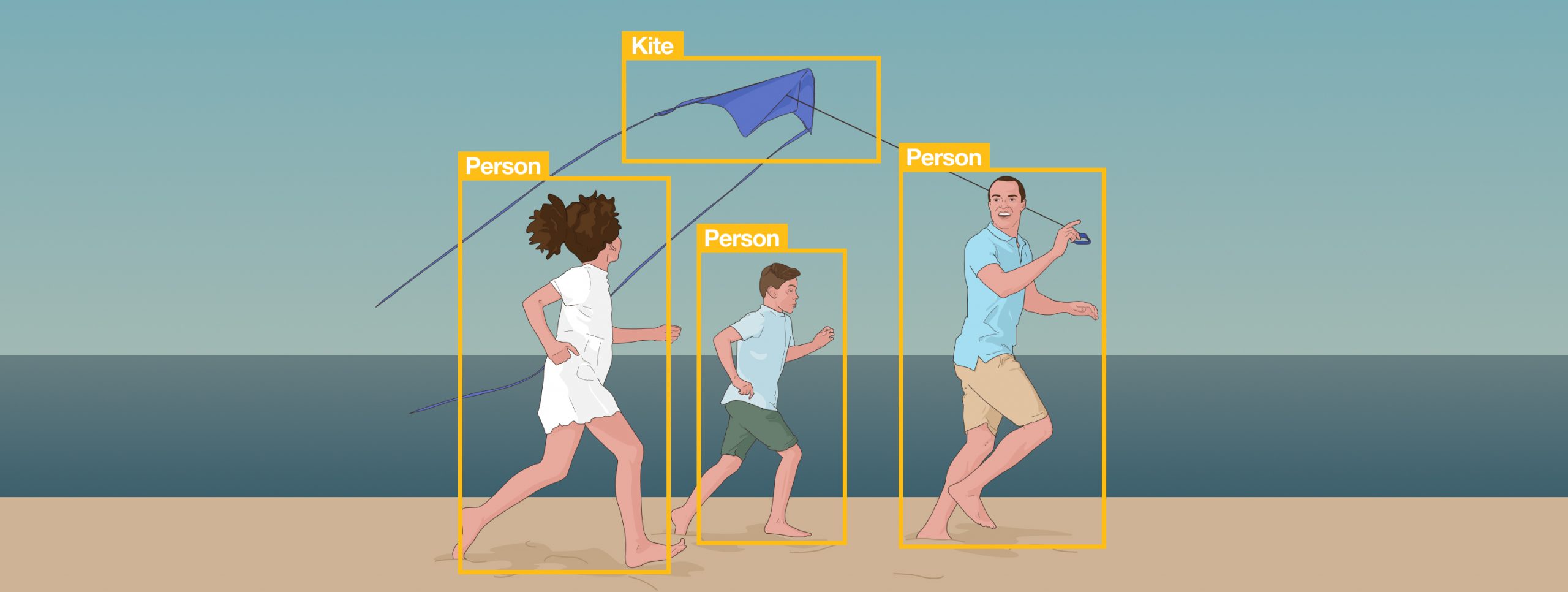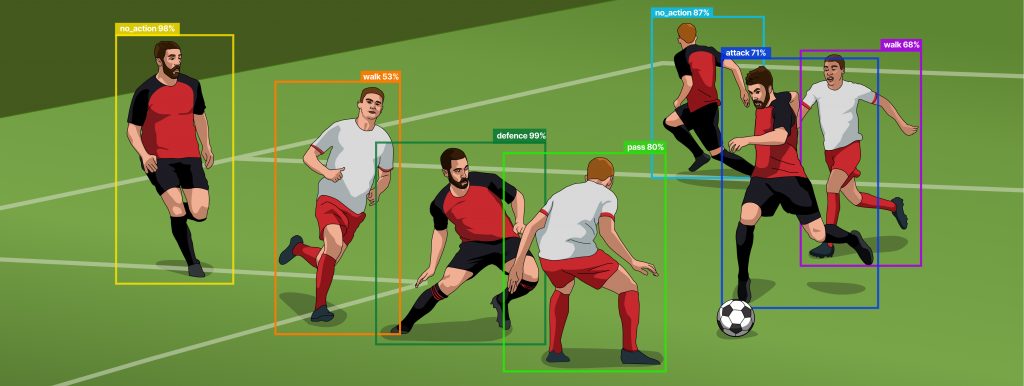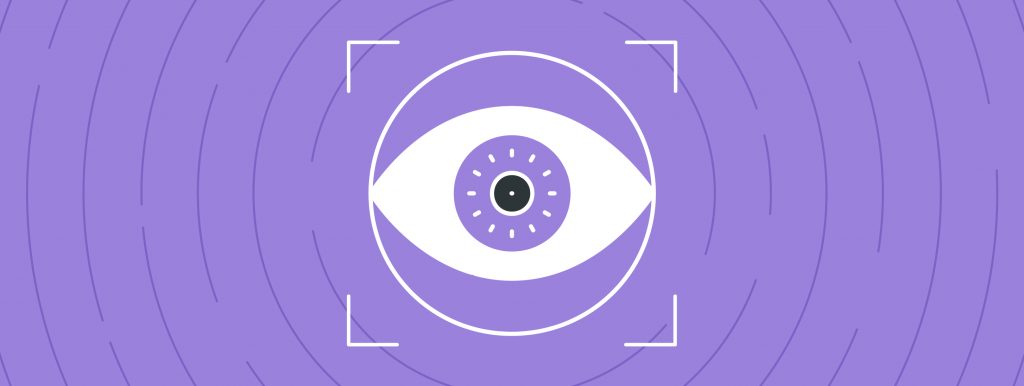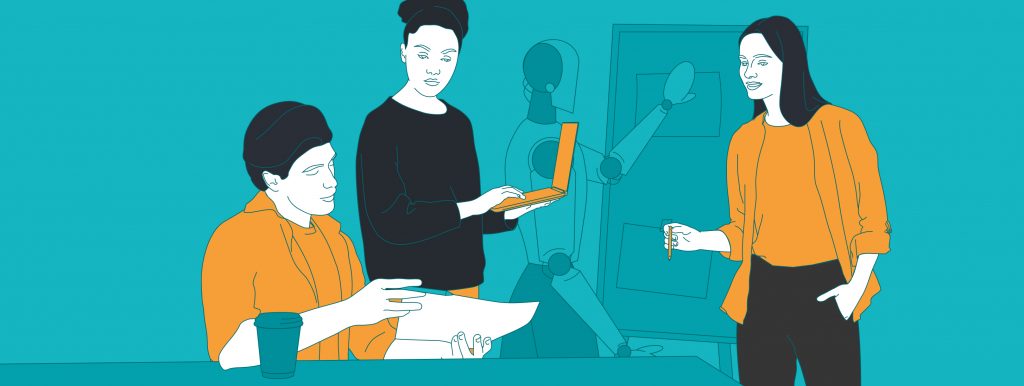Some years ago, finding and classifying individual objects within an image was an extremely difficult task. Today, with the help of computer vision, digital devices can simply and quickly identify the content of images, which opens new ways of visual data understanding and analysis across different fields.
Computer vision object detection involves using algorithms to identify and classify objects within an image or video. This technique has many applications, from autonomous driving to healthcare.
What is the role of object detection these days?
Devices equipped with object detection find objects, draw rectangular bounding boxes around them, and determine the class of each detected object. Object detection applications are used in many different industries, including Retail, Sport, Healthcare, Marketing, Interior Design, Agriculture, Construction, Public Safety, Transportation, and more.
A good example of using computer vision object detection is a system for football schools designed to improve the quality of training analytics and in-club competitions. The platform allows users to track the movement of football players and balls on the field using cameras and use the collected data to create individual training programs.

Despite the significant progress in this field and the great ability of computer vision, the detection of objects is a complex process, for the implementation of which it is required to go through certain challenges.
Challenges in object detection
- Viewpoint variation
One of the biggest difficulties of object detection is that an object viewed from different angles may look completely different. For example, the images of the cakes that you can see below differ from each other because they show the object from different sides. Thus, the goal of detectors is to recognize objects from different viewpoints.
- Deformation
The subject of computer vision analysis is not only a solid object but also bodies that can be deformed and change their shapes, which provides additional complexity for object detection.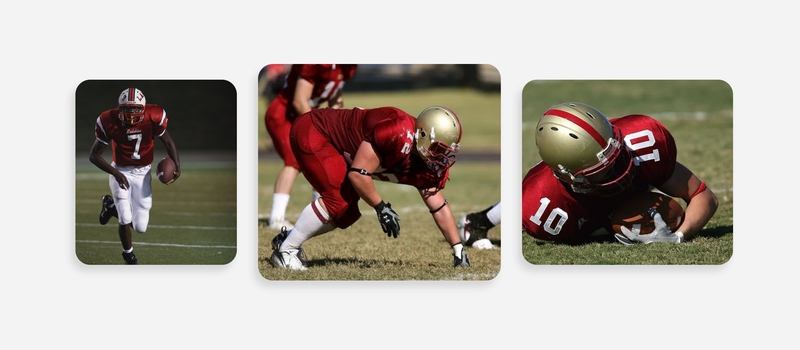 Look at the images of football players in different poses. If the object detector is trained to find a person only in a standing or running position, it may not be able to detect a player who is lying on the field or preparing to make a maneuver by bending down.
Look at the images of football players in different poses. If the object detector is trained to find a person only in a standing or running position, it may not be able to detect a player who is lying on the field or preparing to make a maneuver by bending down. - Occlusion
Sometimes objects can be obscured by other things, which makes it difficult to read the signs and identify these objects. For example, in the first below image, a cup is covered by the hand of the person holding this cup. In the second image, a person is also holding a mobile phone in such a way that the hands are occluding the object. Such situations create additional difficulties for determining the subject.
In the second image, a person is also holding a mobile phone in such a way that the hands are occluding the object. Such situations create additional difficulties for determining the subject. - Illumination conditions
Lighting has a very large influence on the definition of objects. The same objects will look different depending on the lighting conditions. Take a look at the pictures below: the less illuminated space, the less visible the objects are. All of these factors affect the detector’s ability to define objects.
- Cluttered or textured background
Objects that need to be identified may blend into the background, making it difficult to identify them. For example, the below picture shows a lot of items, the location of which is confusing when identifying scissors or other items of interest. In such cases, the object detector will encounter detection problems.
- Variety
The same object can have completely different shapes and sizes. Computer vision needs to do a lot of research to read an object and understand what it means. All the images above depict different types of houses. A good detector should detect these objects and assign them to the same class.
All the images above depict different types of houses. A good detector should detect these objects and assign them to the same class. - Speed
When it comes to video, detectors need to be trained to perform analysis in an ever-changing environment. It means that object detection algorithms must not only accurately classify important objects but also be incredibly fast during prediction to be able to identify objects that are in motion.
The role of computer vision is important for many industries these days. With the help of identifying objects in videos or pictures, you can improve the training of sportsmen, track the traffic of cars on the road, attract new customers, and much more.
However, smart systems equipped with computer vision face a number of difficulties, paying attention to which only makes the system more accurate.
We have enhanced experience in delivering computer vision solutions for object detection and tracking in Agriculture, Healthcare, Transportation, Retail, and more. Contact us if you want to transform your idea into a smart software platform.
